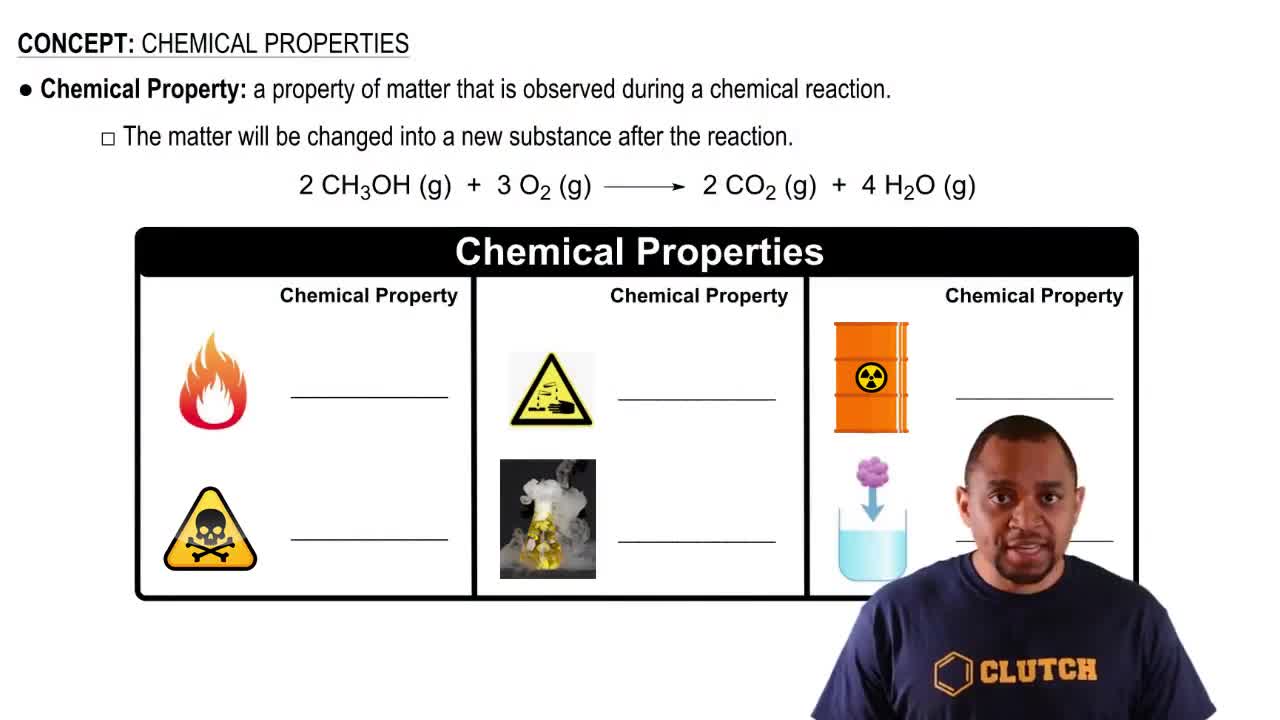Which of the following three drawings represents a neutral Na atom? (a) (b) (c)
In the following drawings, red and blue spheres represent atoms of different elements. Match the molecular pictures (a)–(c) with the following descriptions: (i) a pure substance consisting of a compound (ii) a pure substance consisting of an element (iii) a mixture of element
 Verified step by step guidance
Verified step by step guidance
Verified Solution
Key Concepts
Elements and Compounds

Mixtures

Chemical Representation

Which represents a Ca atom with two positive electrical charges (Ca2+)? (a)
(b)
(c)
Which represents an F atom with one minus charge (F-)? (a)
(b)
(c)
Give molecular formulas corresponding to each of the following ball-and-stick molecular representations (red = O, gray = C, blue = N, ivory = H). In writing the formula, list the elements in alphabetical order. (a) Alanine (an amino acid)
Give molecular formulas corresponding to each of the following ball-and-stick molecular representations (red = O, gray = C, blue = N, ivory = H). In writing the formula, list the elements in alphabetical order. (b) Ethylene glycol (automobile antifreeze)
Give molecular formulas corresponding to each of the following ball-and-stick molecular representations (red = O, gray = C, blue = N, ivory = H). In writing the formula, list the elements in alphabetical order. (c) Acetic acid (vinegar)
